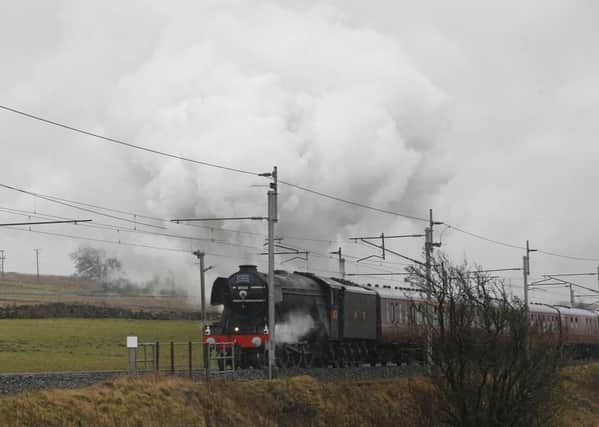Former Peterborough fireman shares experiences with The Flying Scotsman


John Morgan (77) is sharing his experiences of riding on the footplate of the world’s most famous locomotive as an appeal is launched for anyone with connections to the engine to come forward with their memories.
The Flying Scotsman is returning to the tracks after a decade-long, £4.2 million refit.
Advertisement
Hide AdAdvertisement
Hide AdIt thrilled hundreds of rail enthusiasts last month when it emerged into the East Lancashire Railway’s Bury Bolton Street station after the final
stages of the work at a nearby yard.
And on Saturday, the Flying Scotsman ventured onto the mainline network for the first time as it pulled the West Cumbrian Mountain Express.
But the big date in the engine’s diary is its triumphant return to the line which was its home during the golden age of steam on February 25.
Over the next two weeks, the locomotive will be returned to its BR Green livery and have its nameplates reattached ahead of an inaugural run from
Advertisement
Hide AdAdvertisement
Hide AdTo mark the Flying Scotsman’s birthday - when it emerged from the plant works in Doncaster on February 7, 1923 - the NRM has launched an appeal
for memories called My Scotsman.
Mr Morgan, from Peterborough, started his career on the railway at 15 years old in 1954 as an engine cleaner at the steam sheds for King’s
Cross station. He became a fireman at 16 and worked on some of the most famous locomotives of the age, including the Flying Scotsman and the
Mallard, the world’s fastest steam train.
Advertisement
Hide AdAdvertisement
Hide Ad“I have a lot of very good memories of 60103 (Flying Scotsman’s British Rail number),” he said.
“I did a lot of trips on the footplate and shovelled a lot of coal.
“There was a lot of interest, even back then. Whenever we’d back up into King’s Cross there’d be a crowd of people around wanting to get up into
the cab.”
Mr Morgan said that even in the 1950s enthusiasts would swamp the crew with questions about the famous engine.
Advertisement
Hide AdAdvertisement
Hide AdHe said: “I always remember one driver said to them: ‘I only drive the bloody thing, I didn’t build it’.
“I’m not surprised there’s so much interest in it.
“I have a lot of happy memories of that era, but it was bloody dirty work, though.”
The pensioner said he would shovel up to 10 tonnes of coal on some round trips.
Despite being fast-tracked by British Rail, Mr Morgan did not qualify as a driver until the mid-1960s and so he did not get to be a steam train
Advertisement
Hide AdAdvertisement
Hide Addriver - although he said that, as a fireman, he did get to drive the engines at times.
Bob Gwynne, associate curator of collections and research at the NRM, said: “So many people feel that the locomotive is ‘My Scotsman’, and
given that it went into public ownership in 2004 thanks to a massive public appeal with the help of Richard Branson and the Heritage Lottery Fund, it really is the case that it belongs to all of us.
“As we’ve been planning our highly anticipated Scotsman Season, many people have already approached us with their special connections to the iconic steam locomotive and the famous train it was named after.
Advertisement
Hide AdAdvertisement
Hide Ad“We’ve heard from crew members that worked on board and their families, and even of some babies born on the train. We’d love to hear more, especially from those involved with the locomotive on its international travels, in the USA in the 60s and Australia in the 80s.”
People can share their memories of Flying Scotsman at www.flyingscotsman.org.uk or on social media using the #MyScotsman hashtag.